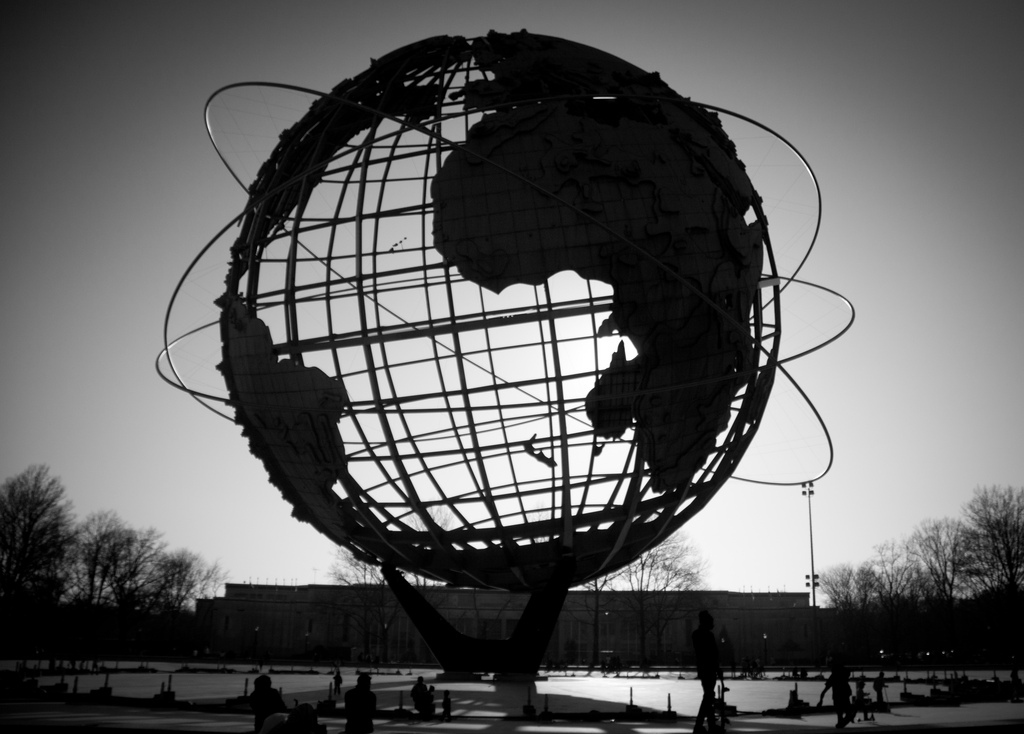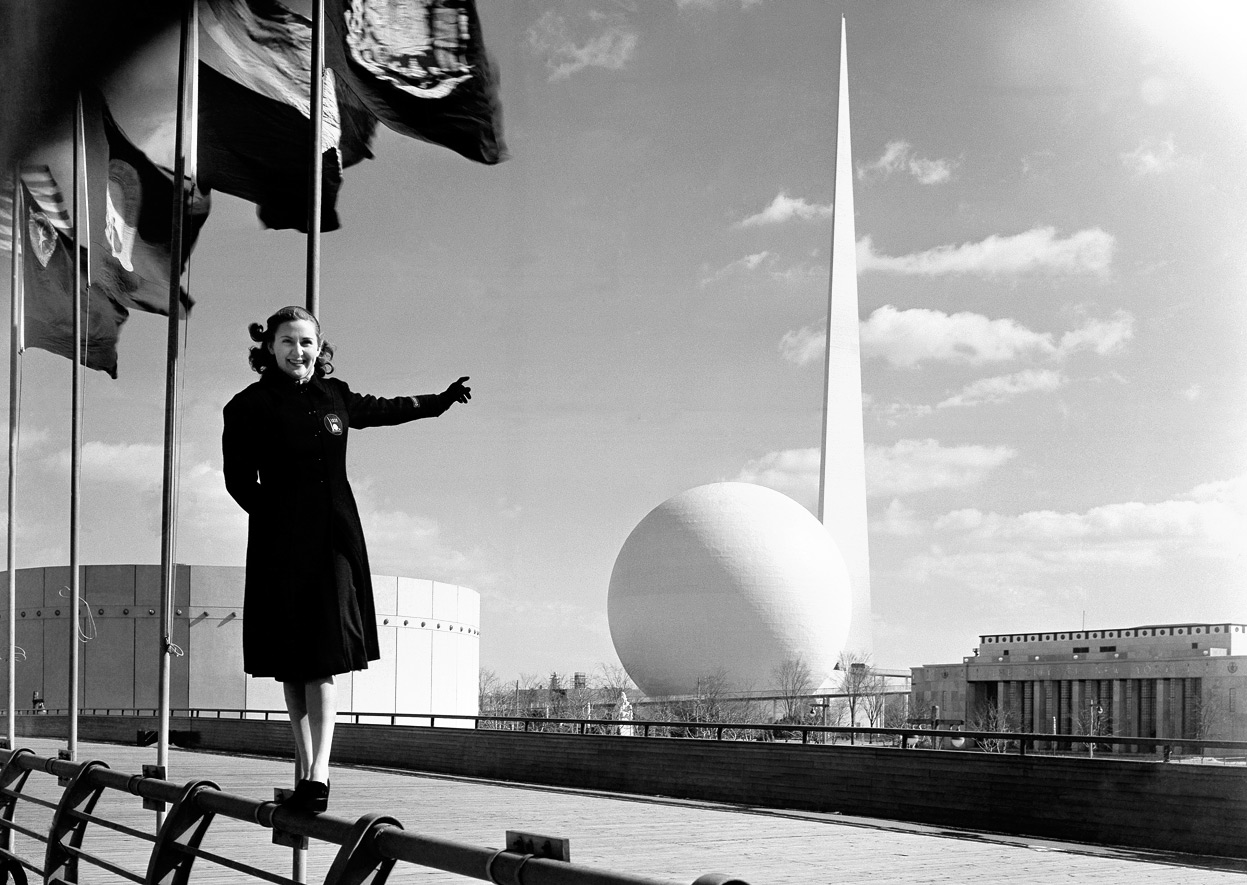Unisphere

In 1961, Moses revealed plans of the Unisphere, at 140 feet in height and 120 feet in diameter the largest globular structure or representation of earth ever to be built. Designed by Gilmore Clarke (with a little help from Moses himself), the Unisphere was (and is) a twelve-story, 940,000-pound, stainless-steel globe girded by three orbiting satellites, with illuminated points marking world capitals. The Unisphere would not just be built by U.S. Steel but also be officially sponsored by the company, a pulic monument to its status as an icon of American muscle and know-how and an immensely powerful promotional tool. Based on the (dubious) claim that Native Americans have little or no fear of heights and thus make ideal bridge workers, the company brought a team of fifty Mohawk Indians from the Caughnawaga reservation on the St. Lawrence River near Montreal to Pittsburgh to build the sphere. Surrounded by a 350-foot-diameter pool smack in the heart of the fairgrounds, the Unisphere was always intended to be permanent, unlike the Trylon and Perisphere , which were demolished and melted down to make weapons during World War II.

Taken from “End of the Innocence: The 1964-1965 New York World’s Fair” by Lawrence Samuel.